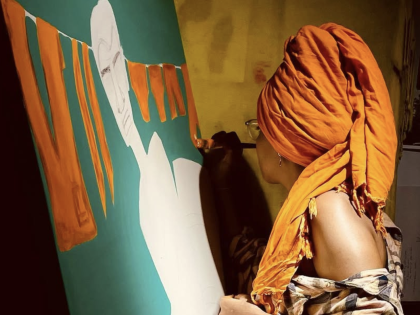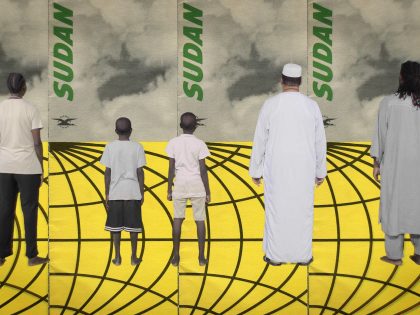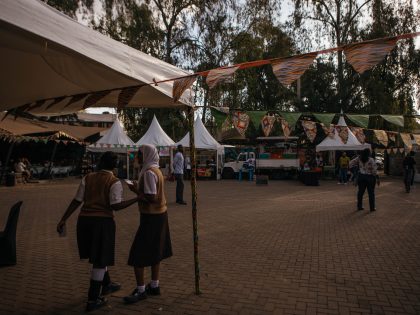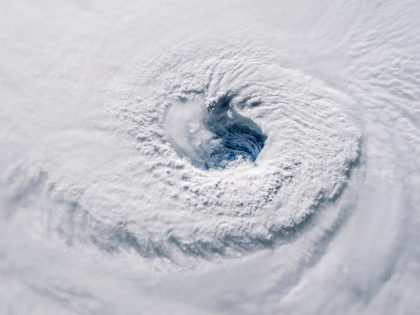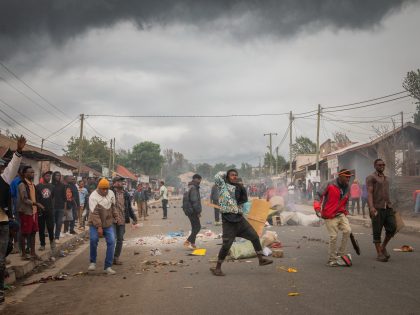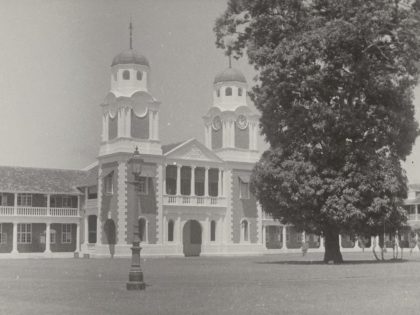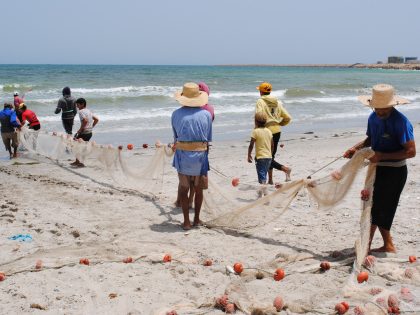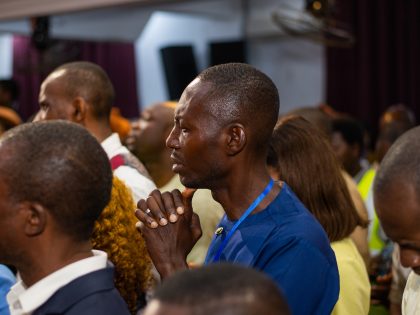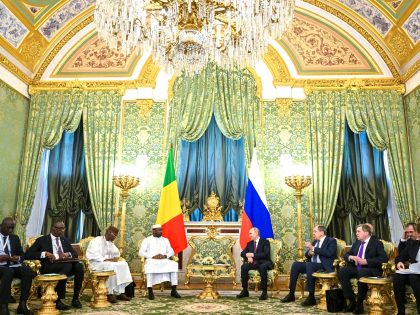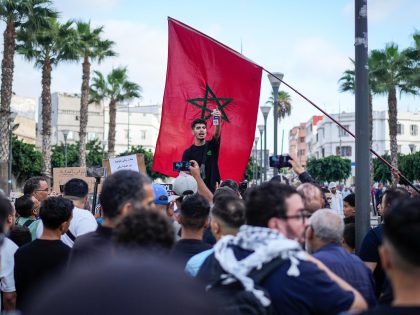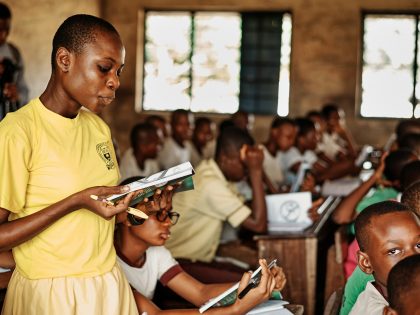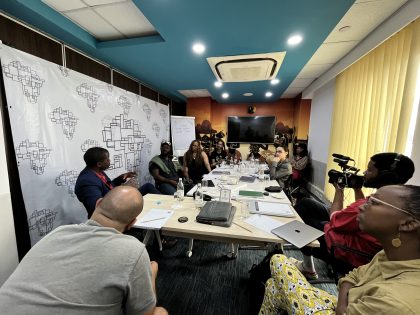Testing the fitness of our own instincts
The Nigerian writer Emmanuel Iduma talks to American photographer and teacher, Eric Gottesman, about his work in Ethiopia.

Photo: Eric Gottesman.
Meeting Eric Gottesman was foundational to my training as an art critic. In late 2011 he advised me to apply to study with David Levi Strauss. When I eventually came around to looking at his photographic work two years later, I found him an exceptionally curious artist, patient with his subjects, and deliberate with his intentions. A week after we had this conversation over Google Chat he arrived New York for a meeting. I hadn’t seen him since December 2011. But it struck me that not once in our meal did we have the awkward pause of strangers.
In looking over our transcript I realized the many talking points left unaddressed. I hope readers would not consider his work finished, regardless of the intensity with which he has worked, and continues to work.
Eric Gottesman is a photographic artist and organizer. Central to his practice is collaboration. He uses photography, writing and film as vehicles to engage others in conversation and critical thought about the social structures that surround them, and him. He works slowly, often spending a long time in a community, and exhibits work locally first, to an audience determined by the co-creators of the work.
Gottesman studied politics and economics and, later, art. In 2003, he was named one of the top 25 young American photographers. He has earned a Fulbright Fellowship in art as well as awards from the Magnum Foundation, Artadia, the Aaron Siskind Foundation, apexart, the Open Society Foundation and the Massachusetts Cultural Council. His work is in various collections including the Museum of Fine Arts, Boston. His first book, Sudden Flowers, was published in 2014. He was named a 2015 Creative Capital Artist.
He is currently a Faculty Fellow at Colby College and has taught at the Massachusetts College of Art and Design, Amherst College, the International Center for Photography, the Institute of Contemporary Art, Boston and conducted workshops in Lebanon, Jordan and Ethiopia.
To see Eric Gottesman’s work, visit his website.
Emmanuel Iduma: Let’s start with biographical details. How did you begin to work in Ethiopia?
Eric Gottesman: I graduated from Duke University and thought I was going into a career in law and human rights. Having been born just after the 1960s and the American Civil Rights Movement, I had this strong sense of having missed out on an important time in my own country’s struggle with justice. I thought law might be a vehicle for me to engage in that struggle. I went to work at the Supreme Court of the United States in Washington DC. I was working as a researcher in the Chief Justice’s office when a former professor of mine called and asked if I wanted to go on a photography fellowship (I only took one photography class in undergrad … otherwise it was political science and history mostly).
I was interested in the ways photography allows you to be physically present with the person you are photographing, so you are forced/able to form a relationship with that person. So I jumped at the chance. The options were Guatemala, South Africa, Philadelphia (strangely enough) or Ethiopia. I knew nothing about Ethiopia except what I learned in my youth in America from the media and from commercials from organizations trying to raise money to alleviate famine… I don’t even know if I knew Ethiopia was in Africa then. But it was far away and so I decided to go there.
EI: How much time did it take you to come to terms with Ethiopia? When I met you there in 2011 I remember thinking—especially sitting in your gorgeous tiny car—that you didn’t seem like a foreigner.
EG: I am still of course coming to terms with it but during those first six months after I arrived in 1999, I really struggled with what it meant for me to be there. I was an outsider, a white American male photographer with no special talent or real justifiable reason to be there. I was just interested (and maybe that is enough). It took me many months to actually pick up my camera and feel comfortable taking pictures. Although at the beginning, I was sent by the organization I was teamed up with to document famine in the east of the country… that was a very weird experience.
Later, though, I think I started to build real relationships and eventually came to know the language and the culture and the geography of the place and began to feel more comfortable being there.
Some of my best friends in the world—my second family really—live there now. I met my wife there. I go back and forth often and will forever. It doesn’t make any real sense really… my connection. But it exists. Perhaps I just let myself fall in love with the place.
I forget which car I had then, by the way. I always get cars from the most random places.
EI: I see this in your photographs. The impulsive connection you spend a long time accounting for.
EG: How so, I wonder?
EI: Well, Sudden Flowers contains photographs that show a deep empathy. I think empathy is immediate. Then you spend more than a decade collaborating with the children, you get to know them, and they are comfortable to photograph and be photographed. But that empathy has been there all along. Would you agree?
EG: It is actually kind of a tricky question. I want to be clear here: I am pro-empathy. And of course I want to say yes, empathy, a desire to understand and feel for other people, was part of the process that led to these pictures … because I do feel real emotions for these people in real life and people in real life generally think of me as empathetic. But empathy in real life is different than photographic empathy. Those organizations that made those commercials about famine… they aimed for photographic empathy too. They want the viewer to feel something and then, as a result, to do something (write a check, etc.). This kind of equation is still around in different forms and it seems okay, but in fact, it risks reinforcing a kind of stereotype and power structure.
EI: I’m thinking about your work in this way, also, because it’s been collaborative. The power structure is turned on its head because it’s a combination of what the viewer can feel and what the subject has experienced. In fact, I believe it is more about what the subject has experienced.
EG: Yes, exactly.
That is ultimately what I hope is subversive in that project, that the historical dynamics of power intrinsic in the relationship between photographer and subject are revealed, flipped, blurred and eventually irrelevant.
And that that process can lead to a new set of voices and a new paradigm of image making. And that singular authorship is in question…so many of the things that you and Invisible Borders are questioning as well.
EI: It was fascinating to me when I read that after the first person with HIV allowed you to take a photograph of her face, you considered “If I Could See Your Face” completed. And this made me think of the photographer’s instinct—something we talk about in Invisible Borders a lot. We should be willing to test the fitness of our own instincts.
EG: I like that idea a lot. The camera can be a reflex and the editing process a reflection on what that reflex means. Just as the painter makes a mark and stands back from the canvas to see how it looks. The camera can also be used more intentionally, taking into account the conditions under which the photograph is made, and when it is, it can be a way to break the viewer’s expectation of belief that we still cling to when we look at photographs. Through breaking these expectations of belief, there arises an opportunity to “confuse” or shift the viewer’s position in relation to the subject. So with that series of pictures, my reflex was to make “Day in the life” pictures of people with HIV, who at that time were highly stigmatized in Ethiopia. That didn’t work because the subjects were too afraid of the consequences of showing their faces in relation to the disease. So upon reflection, I made pictures that look like the kinds of pictures that a documentary photographer might make about a topic like HIV/AIDS in Africa and added this one thing—concealment—that was introduced by the subjects themselves. That led me to think about how much creativity is demanded to find ways to include the subject in the creation of the image about them.
EI: I’m drawn to Beletu’s portrait especially because of the concealment of the eye. Then I wonder if it isn’t this concealment that gives it the kind of amplitude it does. You remember what Walter Benjamin said about the “amplitude that information lacks”?
EG: No, remind me.
EI: Oh, in “The Storyteller” he makes a distinction between information and stories. Information aspires to prompt verification. But not stories. They are not necessarily explanatory, and yet they possess an amplitude.
EG: Yes. Many of these pictures have a “punctum” that are also “anti-punctums.” Right when you expect to be told something, they hold back. Just like my interactions with those people at that time. I usually display these pictures with the text of interviews that I conducted with the subjects. So when the viewers are left feeling empty or adrift, they have something to contextualize the pictures. Often foreign photojournalists use visual symbols to connote suffering in pictures: flies in the eyes, distended bellies, the gruesomeness of violence…I decided to use words instead and not just any words but the words of the subjects.
EI: Yes, your captions are some of my favorite things in your work—they depict the patience of a listener. This is also a good segue to another question: why do you spend much time on projects?
EG: I don’t know really. I think I see the work as an unraveling exploration of an idea or a place or, in some cases, of an individual. I want to go deep in understanding the complexities of each project. That takes me time. And I think new questions arise when I allow myself the freedom to just “hang out” in a place and be open to what comes up. I think this is very much connected to listening; a sort of openness and observation.
Or maybe I am just not that much into dating and more into long-term relationships.
EI: Yes, and with long-term relationships, once there is commitment, the relationship—with the partner, situation, place—becomes more fragile. Heartbreak becomes even more expensive.
EG: So true. And it becomes more difficult to build up momentum and invest in something new. Not that it is hard… it is actually quite exciting.
EI: Certainly. Momentum is exciting. Let’s return to something you mentioned earlier – placing the text of interviews while exhibiting them for context. Is there something the text does to the viewing of the photographs that might not have occurred otherwise?
EG: The relationship of the written word to images is a glorious abyss. In my work, words can be an anchor to the context in which images are created and later seen. Images transmit feeling, not knowledge, and words can inform. They can fill in a gap between what we know or don’t know or they can alter how an image makes us feel. Often photographers use visual symbols to let faraway viewers know something about what is going on in the picture (in Ethiopia, for instance, “flies in the eyes” has connoted “suffering exists here”). But these symbols are often inadequate, and sometimes they are so reductive that they prevent a viewer from a more complex understanding of an image. Words (which can be more precise, versatile and robust) can replace symbols to intensify the narrative and affective impact of an image.
EI: Tell me about your work with the growing photography scene in Addis. I assume you were there when the Addis Foto Fest began.
EG: I began exhibiting and making work in Addis in 1999. Back then, there were only a few photographers in town outside of the studio/wedding photography scene. There were very few photo exhibitions in Addis then. In the early 2000s, a few galleries opened—Zoma, Makush, Wedat, St. George’s, which was already open I think—but showed mostly painters. Most artists working in Ethiopia then (and still now) are influenced by the country’s long history of painting. I had worked with a few young photographers and filmmakers and tried to meet as many people as I could; I had also heard of photographers Antonio Fiorente, Geta Mekonnen who was making a few photographs, and Michael Tsegaye—we both showed at Gallery Wedat, a small gallery that has since closed—and of course Aida Muluneh and a few others. When Aida moved back to Addis I guess about a decade ago, we were in touch but we didn’t really get to know each other until about five or six years ago. What she is building there is focused on the long-term, making sure to get buy-in from institutional partners as well as artistic communities. I was involved in the previous Fest and have been an informal advisor of Aida’s for years, but I wish I could say I was more involved than that. I have been more of an observer of the scene than anything else.
EI: This is very useful history, thank you. I know the Oromaye Project, which explores the life and legacy of writer Baalu Girma, is ongoing. How much longer do you think you’ll work on it?
EG: I have a plan to finish it by September 2016 in its current form, which is a series of collaborative workshops that reimagine the novel in the form of staged photographs that draw inspiration from the novel itself. I will produce these photographs with actors, artists and writers in Ethiopia and, if possible, in Eritrea. This process will be documented in an accompanying film.
EI: I like this project because it enacts the conversation I think photography can have with fiction and with history. Do you think the project would bring new audiences to the book? Is this important to you?
EG: I think this project has already brought new audiences not only to the book but to Amharic literature. We published the first chapter in English in an American academic journal a couple years ago (only the second piece of Amharic literature published in English). Multiple publishers have approached me and the Girma family with offers to publish and translate into English. Also Ethiopian film producers have approached the family to try to adapt the book into a film. I am very excited that we are opening up the book to new audiences outside of Ethiopia as well as to young audiences within Ethiopia whose parents and grandparents certainly read the book, but who do not necessarily even know who Baalu Girma is.
Placing this kind of emphasis on existing cultural forms of production within Ethiopia is very important to me. I believe that Ethiopian culture has suffered from a lot of misrepresentation and that the global canon for art and literature has somehow passed over the place for various reasons, historical, political and cultural. Now there is a lot of work compensating for these omissions, but there is still much to be done.


